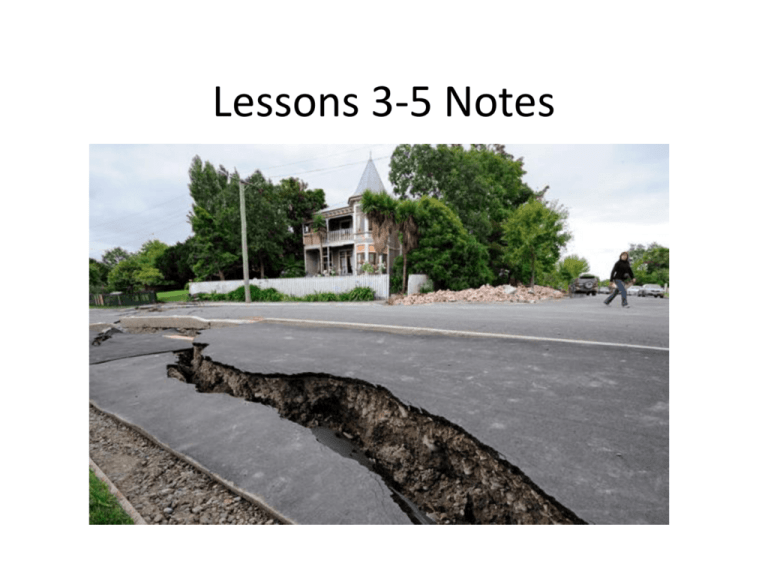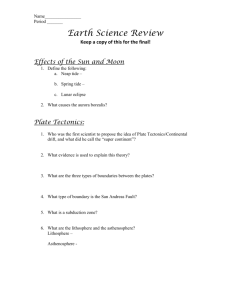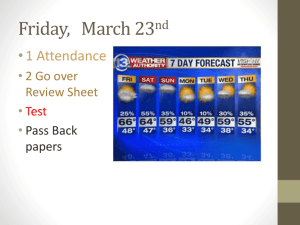Lessons 3
advertisement

Lessons 3-5 Notes Lesson 3 “Recording Earthquake Waves” • Vibrations from an earthquake can be recorded with a seismograph; a seismogram is a recording made by a seismograph. – In the seismograph lab, the harder we hit the table, the larger the waves were on the seismogram. • The larger the earthquake larger waves on seismogram. • The direction of the vibrations also affected the seismogram. This is why seismologists need recordings from several seismographs so that they can get an accurate reading. Focus vs. Epicenter • The smaller wave on a seismogram is a Pwave. • The focus of an earthquake is the place where the rupture begins and energy is released. The place on the earth’s surface directly above the focus is the epicenter. Seismograms • Seismologists use seismograph stations from multiple locations. • The location with the smallest amount of lag time between the P and S wave is the one that is closest to the epicenter of the earthquake. • The time between each earthquake wave arrived at each city are different because they are different distances away from the epicenter. Lesson 4 “Plotting Earthquakes” • Earthquakes and volcanoes occur in many of the same specific locations that are on plate boundaries. • The Ring of Fire, the Mid-Atlantic Ridge, and Mediterranean-Himalayan Belt are areas of intense earthquake activity. – Ring of Fire: around edges of Pacific Ocean – Mid-Atlantic Ridge: runs down the middle of the Atlantic Ocean floor – Mediterranean-Himalayan Belt: extends from west Indonesia through the Himalayas in Asia and the Mediterranean region. Intensity vs. Magnitude • Intensity is the measure of damage done by an earthquake and magnitude is the measure of the total amount of energy released at the focus of an earthquake. Lesson 5 “Using Earthquakes to Study the Earth’s Interior” Crust: Lithosphere Mantle: asthenosphere directly below lithosphere Outer Core: Liquid Inner Core: Solid Lithosphere vs. Asthenosphere • Lithosphere – solid outer shell of earth that is broken up into segments. • Asthenosphere – directly below lithosphere and flows like taffy. How seismologists use earthquakes to study the earth’s interior: • Earthquake waves travel through some substances, but not others, and travel at different speeds depending on the substance. • Patterns of earthquakes and their waves provide information about plate boundaries and the interior structure of the earth.






